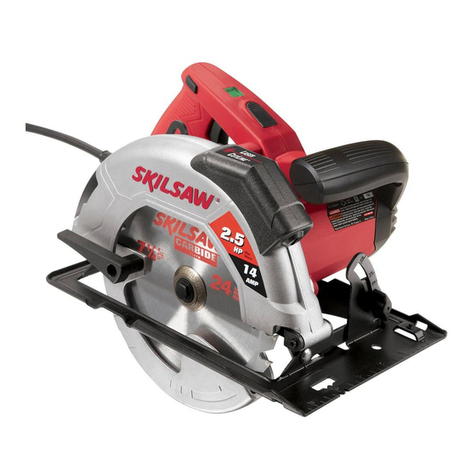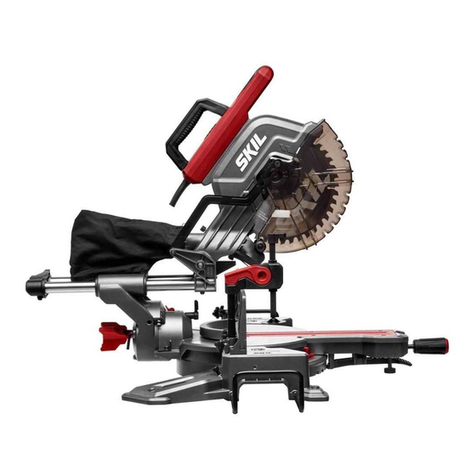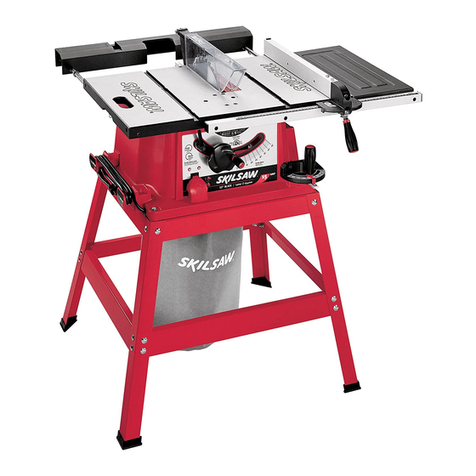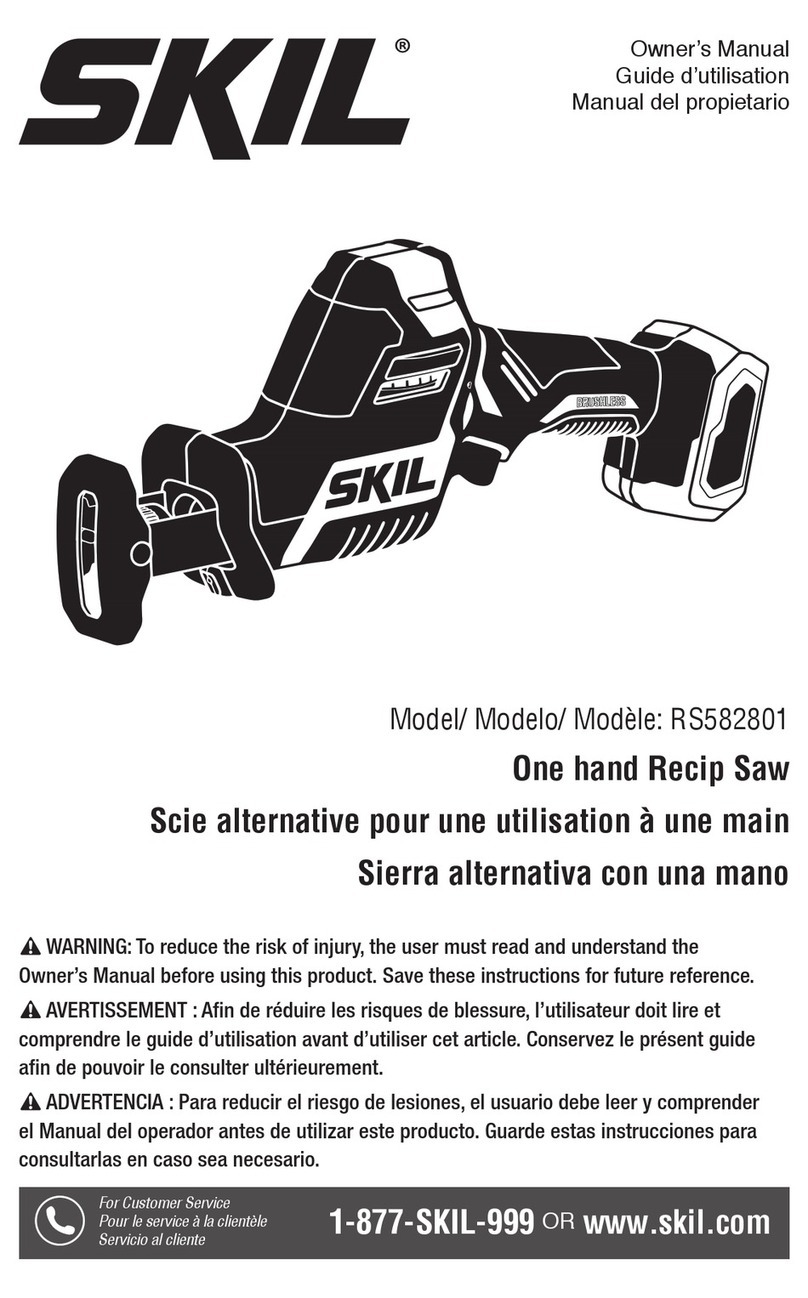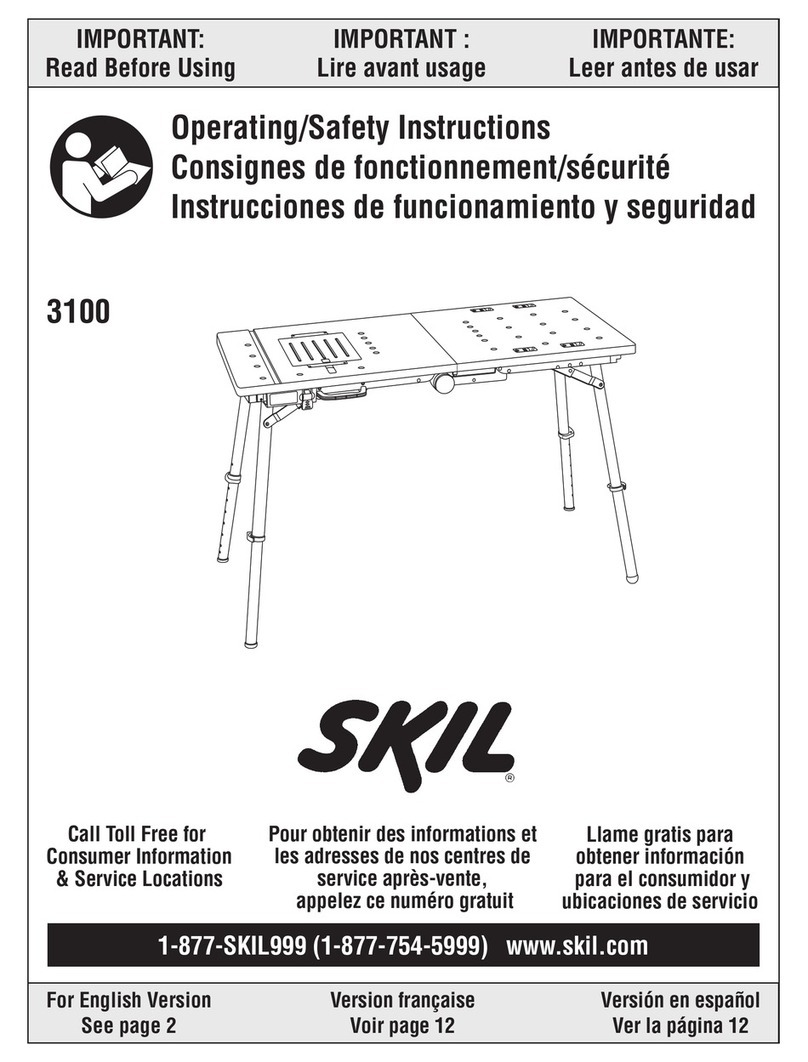
5
Do not expose a battery pack or machine to re or excessive temperature. Exposure to
re or temperature above 265°F (130°C) may cause explosion.
Follow all charging Instructions and do not charge the battery pack or machine outside
the temperature range specied in the instructions. Charging improperly or at temperatures
outside the specied range may damage the battery and increase the risk of re.
Service
Have your machine serviced by a qualied repair person using only identical
replacement parts. This will ensure that the safety of the machine is maintained.
Never service damaged battery packs. Service of battery packs should only be performed
by the manufacturer or authorized service providers.
SAFETY INSTRUCTIONS FOR TELESCOPIC PRUNING SAW
Keep all parts of your body away from the saw chain and the kickback guard when the
pruning saw is operating. Before you start the pruning saw, make sure the saw chain is
not contacting anything. A moment of inattention while operating pruning saws may cause
entanglement of your clothing or body with the saw chain.
Do not reach underneath the lumber. The guard cannot protect you from the saw chain
below the lumber.
Check the kickback guard for proper closing before each use. Do not operate the
pruning saw if the guard does not move freely and close instantly. Never clamp or tie
the kickback guard into the open position. If the pruning saw is accidentally dropped, the
guard may be bent. Raise the guard and make sure it moves freely and does not touch the
saw chain or any other part, in all angles.
Check the operation of the kickback guard spring. If the guard and the spring are
not operating properly, they must be serviced before use. Kickback guard may operate
sluggishly due to damaged parts, gummy deposits, or a build-up of debris.
Do not at any time point the lower part or the tip of the pruning saw towards anyone or
anything other than the wood to be cut. The saw chain on the bottom part of the guide bar
is not covered by a guard, which may cause serious damage or injury if it points to something
or someone.
Always hold the pruning saw rmly with two hands. Holding the pruning saw with only one
hand increases the risk of personal injury and should never be done. Refer to chapter “Proper
Grip on Handles” later in this manual.
Hold the machine by insulated gripping surfaces only, because the saw chain may
contact hidden wiring. Saw chain contacting a “live” wire may make exposed metal parts of
the machine “live” and could give the operator an electric shock.
Do not use the pruning saw in bad weather conditions, especially when there is a risk of
lightning. This decreases the risk of being struck by lightning.
Wear safety glasses and hearing protection. Further protective equipment for head,
hands, legs, and feet is recommended. Adequate protective clothing will reduce personal
injury by ying debris or accidental contact with the saw chain.
Do not operate a pruning saw in a tree. Operation of a pruning saw while up in a tree may
result in personal injury.
Always keep proper footing and operate the pruning saw only when standing on xed,
secure, and level surface. Slippery or unstable surfaces such as ladders may cause a loss of
balance or control of the pruning saw.
When cutting a limb that is under tension, be alert for spring back. When the tension in
the wood bers is released, the spring-loaded limb may strike the operator and/or throw the
pruning saw out of control.

